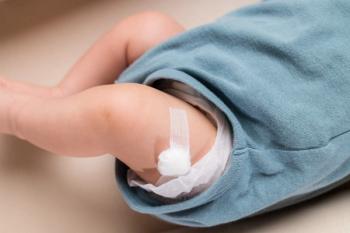
Low-dose steroid effective for severe pediatric Mycoplasma pneumoniae pneumonia
Low-dose methylprednisolone is as effective as high-dose for severe pediatric MPP and has fewer side effects, supporting safer treatment strategies.
A multicenter randomized controlled trial conducted in China provides new evidence supporting the use of low-dose methylprednisolone in combination with azithromycin for treating children with severe Mycoplasma pneumoniae pneumonia (MPP). Published in Pediatric Investigation, the study found that low-dose corticosteroid therapy was as effective as high-dose therapy in reducing long-term pulmonary complications, while exhibiting a more favorable safety profile.1,2
Mycoplasma pneumoniae is a common cause of community-acquired pneumonia in children, particularly those aged 5 years and older. In recent years, the proportion of severe MPP cases has increased globally. According to the authors, approximately 42.6% of MPP cases are now classified as severe. While macrolide antibiotics remain the cornerstone of treatment, adjunctive corticosteroids are frequently used to address the inflammatory response implicated in disease progression.
“Inflammatory response is one of the important mechanisms that cause severe MPP, which presents additional therapeutic challenges,” said Baoping Xu, professor in the Department of Respiratory Medicine at Beijing Children's Hospital, Capital Medical University, Beijing, China, and one of the study’s senior investigators. “Studies have reported that the therapeutic efficacy of macrolide is greatly reduced, potentially contributing to poorer outcomes.”
The trial enrolled 424 hospitalized children with severe MPP across 5 pediatric hospitals in mainland China. Participants were randomized 1:1 to receive either low-dose (2 mg/kg/day) or high-dose (10 mg/kg/day) intravenous methylprednisolone for 3 days, followed by a 12-day taper. All patients also received azithromycin.
The primary outcome was the incidence of long-term pulmonary lesions—specifically atelectasis, bronchiectasis, or bronchiolitis obliterans—evaluated at 6 months post-treatment. Pulmonary lesions developed in 24.4% of children in the low-dose group and 31.3% in the high-dose group. The difference was not statistically significant (risk ratio 1.28; 95% CI: 0.94–1.75).
Secondary outcomes, including fever resolution time, length of hospital stay, and need for intensive care, did not differ significantly between groups. However, the incidence of hypertension was significantly higher in the high-dose group at 8.1%, compared with 1.4% in the low-dose group (risk ratio 5.72; 95% CI: 1.70–19.23). No deaths were reported in either group.
“The high-dose group showed minimal reduction in long-term pulmonary lesions, and the improvements in clinical outcomes were not well pronounced,” the authors wrote.
Xu noted that “The first global prospective surveillance study of M. pneumoniae from 45 sites in 24 countries, showed a significant surge in severe cases and extrapulmonary manifestations following 3 years of COVID-19 pandemic.” He added that it is essential to determine optimal therapy that improves prognosis with minimal side effects.
The study's design addresses limitations present in earlier investigations, which were often retrospective and single-center in nature. By including multiple institutions and implementing a prospective randomized protocol, this trial contributes robust evidence to guide clinical decision-making.
Notably, the study did not compare corticosteroid therapy to antibiotic monotherapy, due to established clinical practice favoring the combination approach. “This study also improves the understanding about the anti-inflammatory effects of methylprednisolone, while providing evidence regarding its low-dose regimen,” the authors stated.
In conclusion, the findings support the use of low-dose methylprednisolone in combination with azithromycin for severe pediatric MPP, offering comparable efficacy to high-dose therapy with a lower risk of adverse events. “Azithromycin combined with low-dose methylprednisolone is just as effective as the high-dose in preventing pulmonary lesions but has a better safety profile with fewer adverse effects,” the authors reported.
References:
- Pediatric Investigation. Pediatric investigation study identifies the optimal dose of methylprednisolone for treating severe mycoplasma pneumoniae pneumonia. Eurekalert. July 31, 2025. Accessed August 5, 2025. https://www.eurekalert.org/news-releases/1093221
- Xu B, Cao L, Shang Y, et al. Low‐dose versus high‐dose methylprednisolone for children with severe Mycoplasma pneumoniae pneumonia (MCMP): A randomized controlled trial. Pediatric Investigation. Published online July 24, 2025. doi:https://doi.org/10.1002/ped4.70014
Newsletter
Access practical, evidence-based guidance to support better care for our youngest patients. Join our email list for the latest clinical updates.








